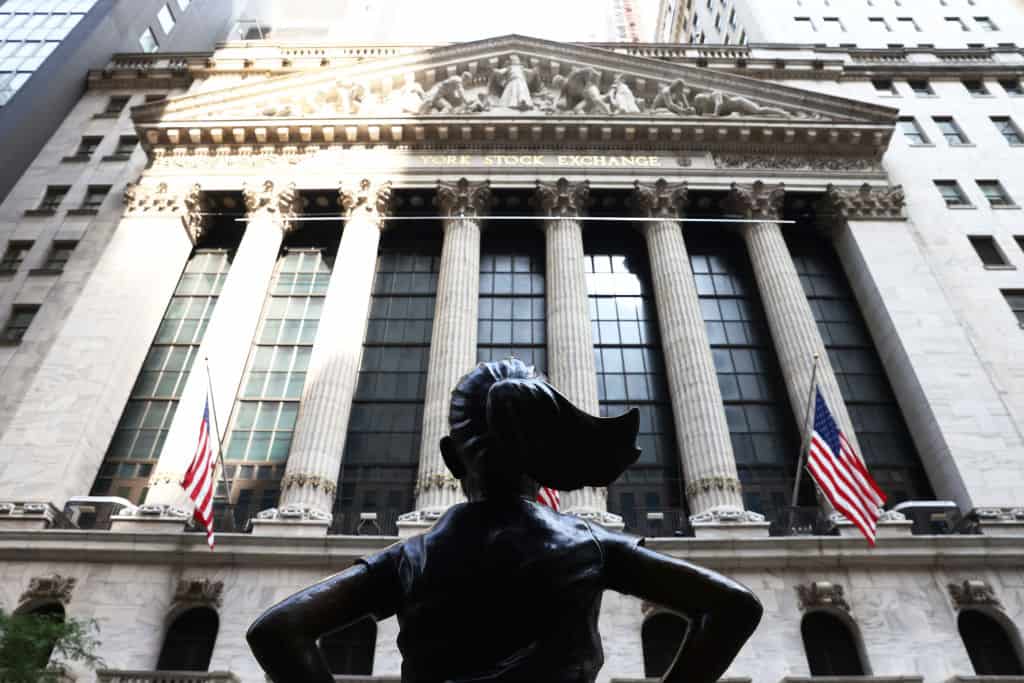One theme that emerged from this month’s multibillion-dollar collapse of the UST stablecoin is to blame it on wicked Wall Street traders invading the cryptocurrency world. The response to that from crypto executives with backgrounds in finance: Grow up.
The blame game over the demise of UST and its LUNA cryptocurrency hinged on allegations the Citadel Securities hedge fund and money manager BlackRock attacked the stablecoin as part of coordinated shorting strategy, or a bet to drive the price lower.
Cardano blockchain founder Charles Hoskinson amplified the theory on Twitter but later deleted the tweet. Both Citadel and BlackRock rejected the allegations, stating that they don’t trade UST.
Lev Mazur, founder of global crypto brokerage Quantfury, said the blame “bad Wall Street guys” was a knee-jerk reaction. “I happen to know that a lot of institutions on Wall Street got hurt because of their exposure to LUNA,” said Mazur, who has worked at banks, mutual funds and family offices as a trader.
Speaking in interviews with Forkast, Mazur is among several executives who said the various cryptocurrency projects that exist will face needed financial stress tests of all kinds as the industry emerges as a new asset class. Vulnerabilities will be exposed, they said.
Regardless of whether the LUNA event was caused by market forces or a coordinated attack, both ideas “represent the reality of the risks that must be addressed for a global currency to survive,” said Max Liao, managing director of Antalpha Technologies, a financial services affiliate of Bitmain Technologies Ltd., a China-based maker of chips used in Bitcoin mining.
Already here
Wall Street hedge funds are already trading cryptocurrencies, and money managers including mutual funds and pension funds are looking to find a way into the market, the Wall Street Journal reported earlier this month.
Crypto exchange Coinbase saw its institutional clients trade US$1.14 trillion worth of crypto in 2021, up from US$120 billion in 2020 and more than twice the US$535 billion traded by retail investors, according to a February report by The Wall Street Journal.
“Crypto product designers and protocol designers should operate under the assumption that attackable weakness is eventually going to be attacked,” said Wayne Huang, CEO of Taiwan-based crypto-fiat exchange XREX.
“That’s always been how financial markets operate, and crypto markets are no different. Vulnerabilities will be discovered a lot earlier than before,” Huang said. “I don’t necessarily see it as a bad thing.”
Huang said he expects more failures as that’s an inevitable process to foster innovation.
“We foresee such incidents to continue to happen to remind us how financial markets operate and the costs of maximizing capital efficiency in exchange for stability,” he said.
Risky business
Liao at Antalpha Technologies said the LUNA collapse will encourage more crypto startups and investors to take risk management more seriously. Andrew Sullivan, a former trader and the founder of Asianmarketsense.com, agreed.
“This is going to probably result in calls for better regulation and certainly a better understanding of exactly where the assets backing these coins are kept,” Sullivan said.
There is also a broader lesson in the demise of UST and LUNA related to contagion risk, said Derek Lim, head of crypto insights at Singapore-based crypto exchange Bybit, in a written response.
“The crash of UST showed that the crypto markets could absorb the shock without threatening the wider financial markets,” Lim said.
As for the risk presented by short selling, it is just “a natural part of market price discovery,” Liao of Antalpha said
“Even if it is sometimes considered unsavory, short selling is a tool that plays a critical role in facilitating rationality in price discovery, which is a major function of capital markets,” he said.
Whether it’s crypto or equities, any asset is always at risk of being overvalued, and the skepticism inherent in the short-selling process allows the market to expose and correct for the overvaluation, Liao added. “Ultimately, this aids freedom in financial markets more than detracting from it.”
Open DeFi
While many crypto and blockchain projects were created with visions of democratizing money and improving inefficiencies in traditional banking, the industry now suffers from excessive speculation, according to some officials.
“Cryptocurrency itself is not supposed to replace Wall Street, but I think it’s supposed to replace inefficiencies in Wall Street and in the government,” said Mazur at crypto brokerage Quantfury.
However, “most of the DeFi (decentralized finance) money is being used to speculate further,” Mazur said, adding that traders leverage off collateral and use the leverage again to buy the same collateral. “It’s almost like a pyramid of endless swaps.”
Amnon Samid, CEO of cybersecurity company BitMint, said what is really damaging the financial freedom rationale is a small number of investors holding an outsize share of crypto assets.
“For example, a minuscule 0.01% of Bitcoin holders control nearly a third of the supply. It means that short sellers can manipulate it, and could have manipulated UST,” he said.
Michael Wong, cofounder and managing partner of Hong Kong-based crypto hedge fund MaiCapital, said the nature of DeFi or blockchain projects is that “they have to remain very open in terms of the transactions.”
This can expose them to aggressive trading strategies, he said, noting that this illustrates the need for robust risk management. MaiCapital’s strategy was net neutral before the crash of UST, “meaning we were not net long in crypto,” he said.
Huang of XREX, nonetheless, is optimistic about crypto. Despite the turmoil, “it doesn’t change crypto’s mission,” he said.
“It doesn’t change the fact that blockchain, distributed ledgers and cryptocurrency are the fastest way for us to provide financial sovereignty to every person in this world,” he said, while adding that the crypto industry needs to do better.
“And we can’t blame it on the Wall Street guys.”





